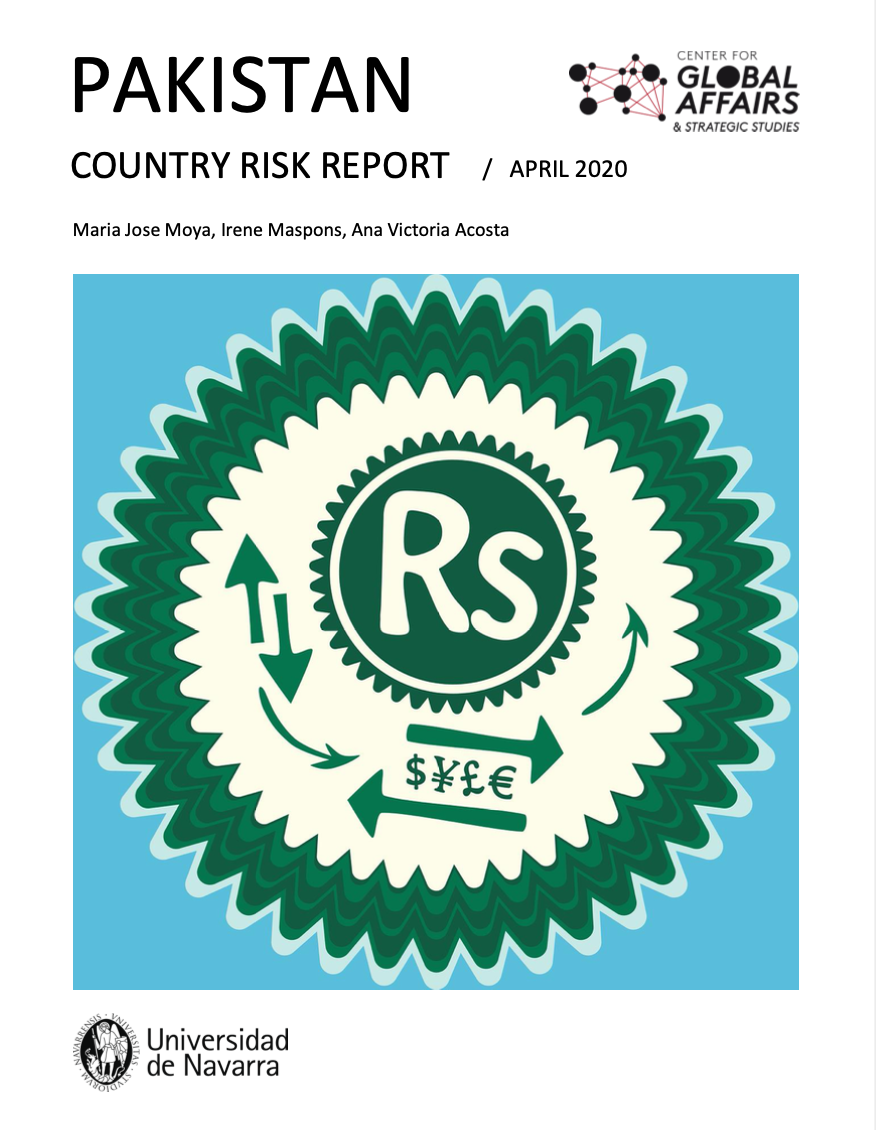![Artistic image of a Pakistani Rupee [Pixabay]. Artistic image of a Pakistani Rupee [Pixabay].](/documents/10174/16849987/pakistan-country-risk-report-blog.jpg)
▲ Artistic image of a Pakistani Rupee [Pixabay].
COUNTRY RISK REPORT / M. J. Moya, I. Maspons, A. V. Acosta
 [Download the report]
[Download the report]
April 2020
EXECUTIVE SUMMARY
The government of Prime Minister (PM), Imran Khan, was slowly moving towards economic, social, and political improvements, but all these efforts might be hampered by the recent outbreak of the COVID-19 virus since the government must temporarily shift its focus and resources to keeping its population safe. Additionally, high logistical, legal, and security challenges still generate an uncompetitive operating environment and thus, an unattractive market for foreign investment in Pakistan.
Firstly, in relation to the country's economic outlook, Gross Domestic Product (GDP) was expected to gradually recover around 5% in the upcoming years. However, according to latest estimates, this growth will suffer a negative impact and fall to around 2%, straining the country's most recent recorded improvements. On the other hand, in the medium to long-term, Pakistan will benefit from the success of the China-Pakistan Economic Corridor (CPEC), which is a strategic economic project aiming to improve infrastructure capacity in the country. Pakistan is also facing an energy crisis along with a growing demand from a booming population that hinder a proper economic progress.
Secondly, Pakistan's political future will be shaped by Khan's ability to transform his short-term policies into long-term strategies. However, in order to achieve this, the government must tackle the root causes of political instability in Pakistan, such as long-lasting corruption, the constant military influence in decision-making processes, the historical discussion among secularism and Islamism, and the new challenges posed by the COVID-19 pandemic. Still, PM Khan's progressive reforms could represent the beginning towards a "Naya Pakistan" ("New Pakistan").
Thirdly, Pakistan's social stability is contextualized within a high risk of terrorist attacks due to its internal security gaps. The ethnic dilemma among the provinces along with the government's violent oppression of insurgencies will continue to impede development and social cohesion within the country. This will further aggravate in light of a current shortage of resources and the impacts of climate change.
In addition, in terms of Pakistan's security outlook, the country is expected to tackle terrorist financing and money laundering networks in order to avoid being blacklisted by the Financial Action Task Force (FATF). Nonetheless, due to a porous border with Afghanistan, Pakistan faces drug trafficking challenges that further destabilize national security. Finally, the turbulent Indo-Pakistani relation is the most significant conflict for the South Asian country. The disputed region of Jammu and Kashmir, a possible nuclear confrontation, and the increase of nationalist movements along the Punjab region, hamper regional and international peace.